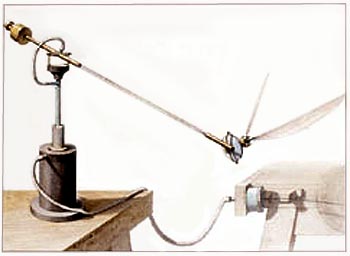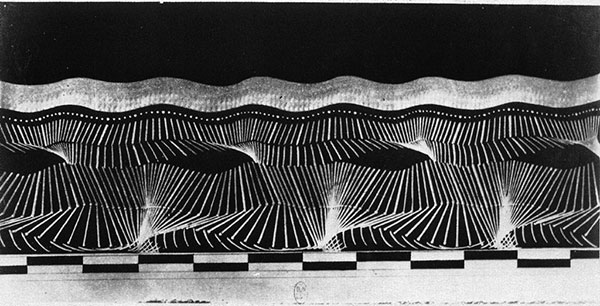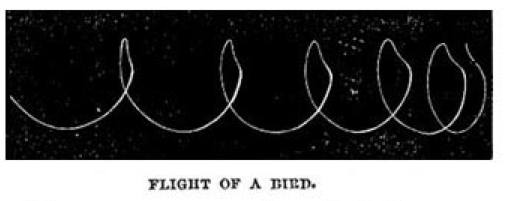The history that leads to the invention of the motion picture camera is contained in a burst of activity in the mid 1800 as scientists and artists in Europe and America feverishly worked to develop the technology and approaches that could capture motion in an image.
Interestingly, as was the case with the earliest inscriptions of sound, these first experiments were not necessarily conceived with the desire to create a “movie” but instead to better understand the motion in the world around us. Two key figures in this development were Edward Muybridge, the Englishman working in the United States, and Étienne-Jules Marey in France.
Étienne-Jules Marey was a scientist with an interest in the regulation of the human body; he studied the pulses and movements of the human cardiovascular and muscular systems. He developed, for example, an instrument to measure the human pulse called a Sphygmograph

In 1869 Marey invented a mechanical insect to demonstrate flight.
“Early in 1869 Marey constructed a very delicate machine to demonstrate the flight of an insect and the figure-8 shape it produced during its movement. His artificial insect, with a body formed by a drum containing compressed air, could move up, down, and even diagonally.:
– http://www.ctie.monash.edu.au/hargrave/marey.html

Marey used a device called a Pantographe to transcribe the movement of insect and birds wings on to paper.
A pantographe is, essentially a mechanical device that allows one motion (such as the tracing of a shape) to be translated into another form. Usually this was used to change the scale of a drawing, as in this animation:

But Marey used this principle of translation to convert the movement of wings to a line tracing (on a piece of paper blackened with soot). The results showed a difference between the movement of a bird and that of an insect.
It is worth noting that the discoveries that Marey was making in the mechanics of flight were happening at the same time as a race to achieve manned flight which would have to wait another 32 years until the Wright Brothers successfully achieved flight at Kitty Hawk.
His interest in flight also led Marey to investigate the idea of aerodynamics and by using a specially constructed smoke chamber, he was able to study the effect that bodies have as they move through and displace the air.





